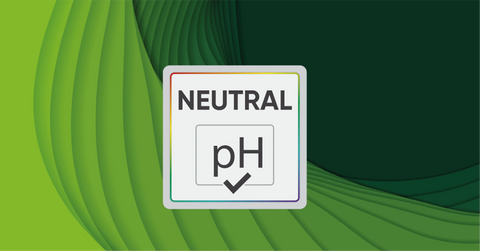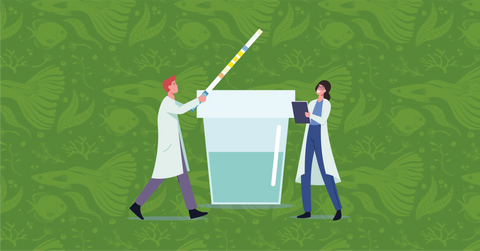Proper care of aquarium fish is impossible without considering the chemical parameters of the water, and one of the key indicators is the pH level. This parameter affects fish health, plant growth, and the microbiological balance within the aquarium.

What is pH?
The pH level is a measure of the acidity or alkalinity of water, expressed on a scale from 0 to 14.
- A pH of 7 is considered neutral.
- Values below 7 indicate an acidic environment.
- Values above 7 indicate an alkaline environment.
It is important to understand that the pH scale is logarithmic. This means that a change in pH by one unit represents a tenfold change in the concentration of hydrogen ions (H+). For example, when the pH changes from 7 to 6, the water becomes ten times more acidic, and when it changes from 7 to 5, it becomes 100 times more acidic.
How Does pH Affect Aquarium Inhabitants?
Fish and other organisms in the aquarium have a specific pH range in which they can live and reproduce normally. Sudden changes or deviations from this range can have serious consequences:Ruslan Dymchuk
- Stress in fish. A sudden pH spike causes stress, weakening the immune system.
- Breathing difficulties. An inappropriate pH level can affect a fish’s ability to absorb oxygen.
Toxin poisoning. At high pH levels, the toxicity of ammonia increases, which can lead to poisoning.
- Fish death. Critical pH changes can be fatal for most species.
What Can Cause pH Fluctuations?
Introduction of new water. Tap water often has a pH different from the aquarium water.
- Decomposition of organic matter. Leftover food, fish waste, and decaying plants can increase the acidity of the water.
- Use of inappropriate substrate. Some substrates or decorations may release substances that alter the pH.
- Low carbonate hardness of water. With insufficient carbonate hardness, pH can fluctuate significantly due to the accumulation of organic matter, often leading to fish death.
How to Control pH Levels?
Regular testing. Use quality test kits to measure the pH of the water 1-2 times a week.
Gradual adjustments. If pH correction is necessary, make changes gradually to avoid stressing the fish.
Establish a stable filtration system. Biofilters help maintain chemical balance.
Use buffers. Apply specialized products to stabilize pH levels when needed.
Conclusion
Controlling pH levels is not just a technical aspect of aquarium care but also the key to the health and longevity of your fish. Understanding how pH affects the biological system of the aquarium minimizes risks and creates comfortable conditions for your underwater inhabitants.





Comments (0)
There are no comments for this article. Be the first one to leave a message!